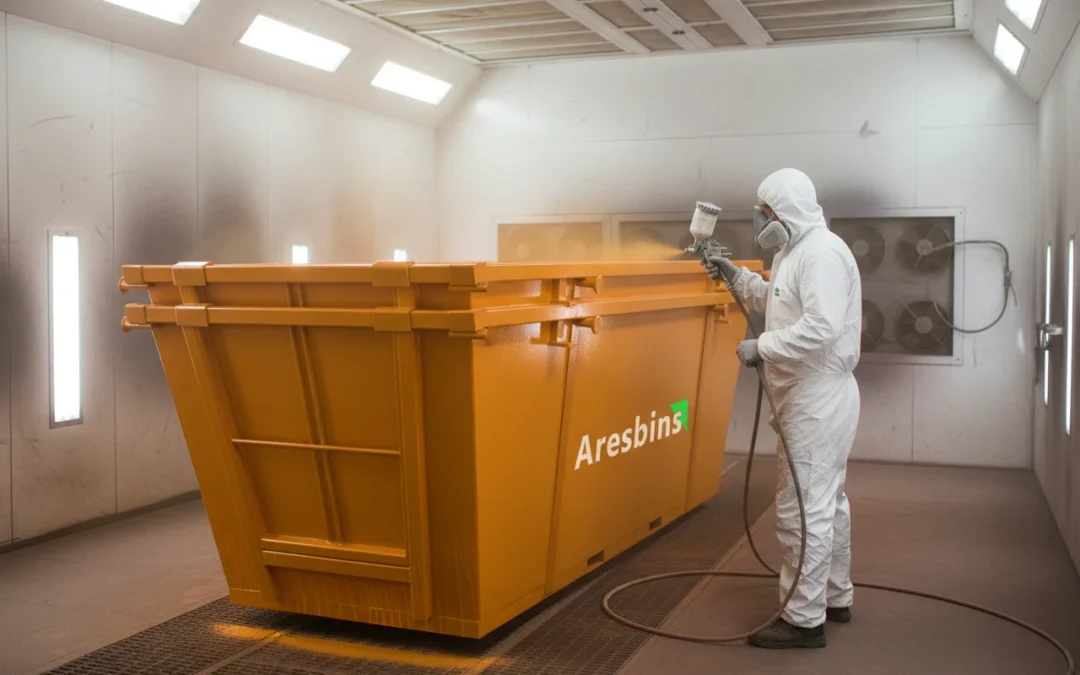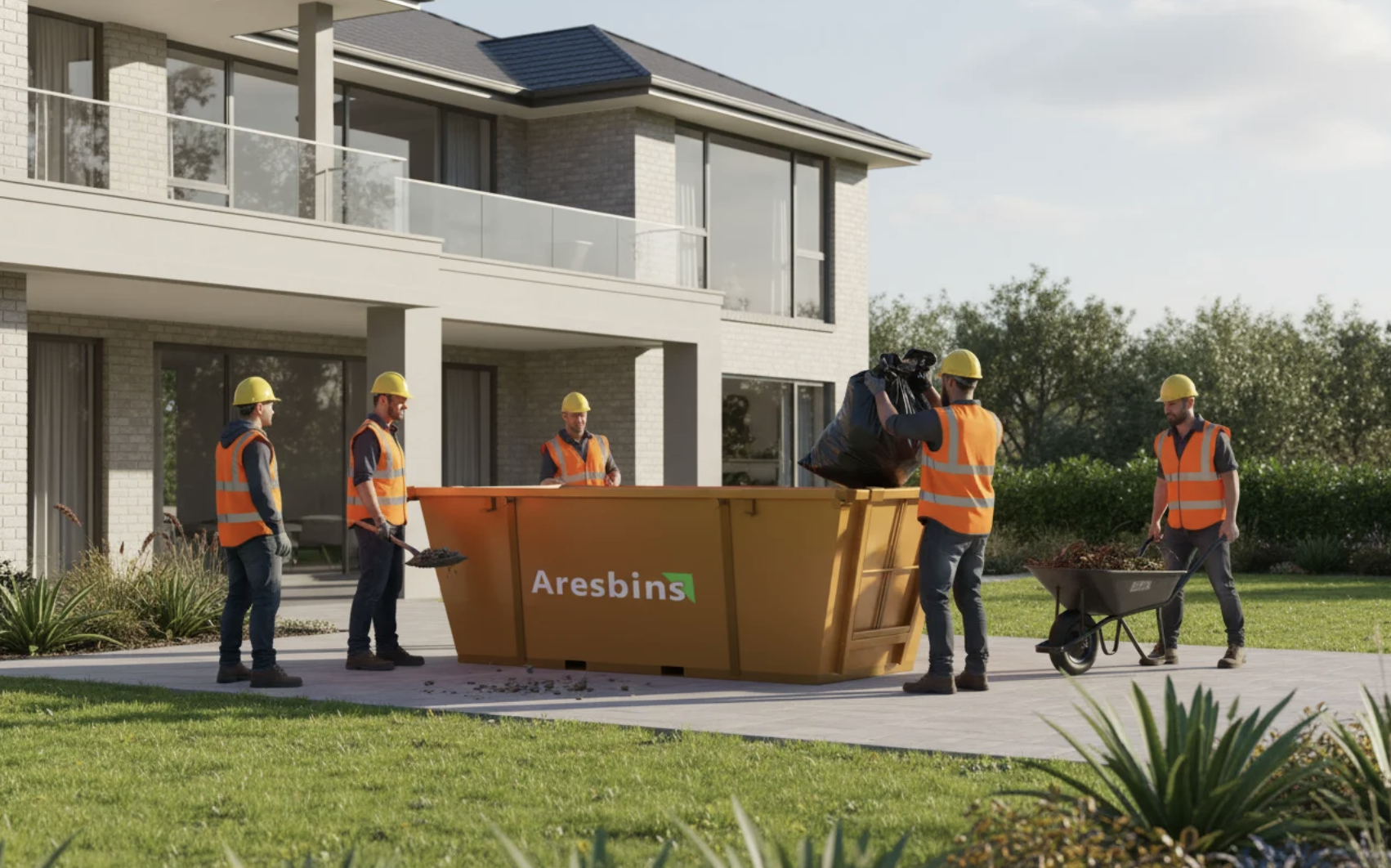1) Use Environments & Corrosion Classes (ISO 12944)
I recommend starting with the right paint system for your skip bin’s environment. Match it to the correct corrosion class from ISO 12944. This standard sorts corrosion risk into clear categories:
Corrosion Categories Explained
-
C1 (Very Low): Heated indoor storage—offices, schools. You won’t see these used for outdoor bins.
-
C2 (Low): Rural depots, unheated sheds, minimal outdoor pollution.
-
C3 (Medium): Urban and industrial areas with moderate pollution. Most standard skip bins fit here. For example, Bica outdoor waste bins are C3 rated.
-
C4 (High): Coastal cities, industrial parks, or areas near chemical plants. Salt or industrial fumes create higher risk.
-
C5 (Very High): Skip bins near ports, chemical plants, or pollution-heavy zones. High humidity or closeness to seawater increases the risk.
-
CX (Extreme): Offshore bins and those on marine platforms or tropical oil & gas sites. These need the strongest protection.
Durability Categories (ISO 12944)
-
Low Durability (L): 2–5 years (rare for commercial skip bins).
-
Medium (M): 5–15 years.
-
High (H): 15–25 years.
-
Very High (VH): More than 25 years. I suggest this for offshore or harsh conditions.
Practical Examples & Paint System Choices
-
Urban Skip Bins (C3): A cost-effective, moderate system works well. I suggest single or double-coat epoxy/polyurethane.
-
Coastal/Industrial (C4/C5): Use multi-coat systems with higher film thickness (120–320 µm). I recommend zinc-rich primers.
-
Offshore/Marine (CX): Apply 3+ coats, up to 800 µm dry film thickness. Systems must survive 4,200 hours (25 weeks) of lab cyclic testing as verification.
Common Environments and Paint Specs
|
Class |
Environment |
Description |
Minimum Paint Spec (µm) |
|---|---|---|---|
|
C1 |
Office, school |
No outdoor exposure |
Minimal |
|
C2 |
Rural depot |
Low pollution |
Minimal |
|
C3 |
Urban city, commercial |
Moderate pollution |
80–120 µm |
|
C4 |
Coastal town, industrial yard |
Moderate salinity, chemical exposure |
120–200 µm |
|
C5 |
Port, heavy industrial |
High humidity/pollution |
200–320 µm |
|
CX |
Offshore, marine platform |
Extreme, tropical conditions |
Up to 800 µm |
Key Recommendations
-
Always check the ISO 12944 corrosion class for your skip bin’s location.
-
Pick the paint system that matches corrosion resistance and required lifespan.
-
For higher rating levels (C4–CX), I recommend you increase coating thickness. Use zinc-rich primers and demand tested systems for best durability.
-
Wrong paint choice leads to coating failure soon after application. It raises costs and can cause structural damage. This is critical in marine or industrial use. Based on my experience, proper selection saves money and extends bin life.
2) Three Recommended Paint Systems for Skip Bins (Build, Thickness & Service Life)
I recommend choosing the right skip bin paint system. It maximizes durability and cuts long-term costs. Here are three effective, industry-approved coating systems. I ranked them by budget, protection, and service life.
1. 2-Pack Epoxy + Polyurethane System (Cost-Effective Versatility)
System Build & Application Steps
– Start with a 2-pack epoxy primer. It gives strong adhesion, prevents corrosion, and creates a moisture/chemical barrier on the steel.
– Add 1–2 coats of 2-pack polyurethane topcoat. This boosts UV protection. It maintains gloss and color. It resists impacts.
Recommended Film Thickness
– Epoxy Primer/Base: 2 coats, each 2–3 mils (50–75 µm) dry. Total build is 100–150 µm for most skip bins.
– Polyurethane Topcoat: 1–2 coats, also 2–3 mils (50–75 µm) dry per layer.
– Example: Imron® polyurethane achieves 2–3 mils wet film per topcoat layer. This gives the best coverage in the industry.
Service Life & Value
– Apply this system correctly. It lasts 5–10+ years in most skip bin conditions. In harsh environments, epoxy primers alone can prevent corrosion for up to 20 years.
– System durability depends on preparation, exposure, and abrasion levels. Bins handled often may need spot touch-ups. Bins used less can exceed 10 years without major repainting.
Performance & Advantages
– Epoxy: Delivers high-build coverage. It resists chemicals and abrasion. It stops rust and moisture.
– Polyurethane: I like this for UV and weather resistance. It keeps color and finish sharp for longer. It’s flexible and easy to clean.
– Maintenance: Repairs are simple. Just sand, feather the edges, and recoat.
Key Data & Notable Examples
– Coverage: Epoxy Ultra kit covers about 400 sq ft at 4 mils DFT.
– Polyurethane (Epifanes): A single 750 ml can covers 100–120 sq ft per coat. It delivers high gloss and UV protection for heavy-duty and DIY users.
– Service Range: System operates from -20°C up to 90°C. It handles all seasonal exposure.
– VOC/Safety: Modern versions offer low-VOC alternatives. Always use proper PPE. Ensure ventilation.
– Price Guidance: Typical two-gallon industrial kits have moderate prices. They reduce re-coating and repairs. This makes them cost-effective in the long run.
Technical Summary Table:
|
Layer |
Build (mil/µm DFT) |
Core Benefit |
Lifespan |
|---|---|---|---|
|
2-pack Epoxy Primer |
2–3 mils (50–75 µm) |
Adhesion, corrosion, barrier |
5–20 years |
|
2-pack Polyurethane |
2–3 mils (50–75 µm) |
UV, color, impact resistance |
3–7 years (topcoat) |
|
Total |
4–6 mils (100–150 µm) |
Heavy-duty protection |
5–10+ years |
My Take:
I suggest this system for high-traffic urban skip bins or rental fleets. Based on my experience, it offers the best balance between up-front cost and long-term reliability. A maintenance repaint every 5–8 years keeps bins looking like new. It keeps them protected. Fix mechanical impacts right away—I recommend acting fast on damage. Prep bins well. Stationary skips can exceed a decade without full repainting. This delivers real savings. It delivers lasting value.
3) Typical Performance & Test Metrics for Skip Bin Paint
You need to specify paint for skip bins. Performance and durability matter most. Here’s what I recommend you look for in technical specs or tender requirements:
Essential Paint Performance Metrics
-
UV Resistance:
Skip bin paints for outdoor use must resist fading and color change. The industry standard is clear: after 1,000 hours of accelerated UV exposure (ASTM D4587), color shift (delta E) should not exceed 3. For bins stored indoors, 500 hours is acceptable. Run tests on at least four standard paint coupons. Compare them to unexposed controls. -
Adhesion Strength:
Coatings must achieve at least a 4B rating in the ASTM D3359 Cross Hatch test. This ensures the paint won’t flake or peel. Regular bin use creates mechanical stress. Good adhesion handles it. -
Gloss & Surface Texture:
I recommend high-gloss topcoats for skip bins. They clean better and keep their appearance. Specific gloss numbers will depend on your client specs. -
Impact & Abrasion Resistance:
Paint must handle frequent knocks. Waste loading and unloading create impacts. The testing method (often ASTM D2794 or similar) must match industrial standards for impact and durability. -
Corrosion Resistance:
Paint must protect metal surfaces from rust. This is critical for outdoor bins. It’s also vital for bins exposed to moist or saline environments. Typical testing: 500–1,000 hours salt spray exposure (ASTM B117) with no visible red rust. -
Chemical Resistance:
Skip bin paint must resist softening or blistering. Common chemicals and wastes cause exposure. You validate this based on local rules and customer needs.
Quick-Reference Performance Table
|
Metric |
Test Method |
Standard Criteria |
|---|---|---|
|
UV Resistance |
ASTM D4587 (QUV) |
≤3 Delta E/1,000 hrs (outdoor); 500 hrs |
|
Adhesion |
ASTM D3359 Cross Hatch |
≥4B |
|
Corrosion Resistance |
ASTM B117 (Salt Spray) |
500–1,000 hrs, no rust |
|
Impact Resistance |
ASTM D2794 or similar |
No cracking/delamination |
|
Chemical Resistance |
Per project/regulation |
No blistering/softening |
|
Gloss/Texture |
Per project/client spec |
High gloss preferred |
|
Film Thickness |
DFT gauge |
As specified (e.g., 60 µm min) |
Example Tender/Spec Language
-
_”All exterior skip bin surfaces must achieve ≥4B adhesion, ≤3 delta E (ASTM D4587, 1,000 hrs) UV stability, and withstand 500 hrs in ASTM B117 salt spray with no red rust visible.”_
-
_”Submit certified test reports for UV, adhesion, and corrosion resistance. Include raw data and photos of all tested panels.”_
Key Takeaways:
I believe strong skip bin paint should be proven against standard tests. This ensures your bins look better and last longer. It also lowers your maintenance costs. Always ask your supplier for the most current test results. Request technical certifications too.
4) Surface Prep & Application Essentials
Good surface prep is key. It ensures your skip bin paint lasts through heavy use and weather. Start with a high-powered spray brush to remove dirt, grease, and grime. Pay close attention to hidden edges and recesses. These spots trap debris that ruins paint adhesion if you leave them dirty.
Rust Removal & Spot Priming
Use spot sanding and grinding to remove visible rust. Do this step right before painting. Fresh metal surfaces re-oxidize fast when exposed too long. After you clear the rust, spot prime these areas. I recommend redoing the entire primer coat if the old layer is failing. If it looks fine, save time and material. Just target problem spots.
Paint Selection & Environmental Factors
Alkyd enamel paints work well for direct-to-metal jobs. They come in oil-based or safer water-based formulas. They resist chipping from impacts. I advise confirming your paint is container-friendly. It should maintain longevity and meet skip bin environmental rules.
Standards & Specialty Finishes
Follow trusted industrial prep standards like NACE SSPC. These guarantee safety, surface cleanliness, and lasting paint adhesion. If you need a specialty look—like camouflage or decorative murals—pick container-appropriate paints. This avoids durability and safety problems later.




Recent Comments